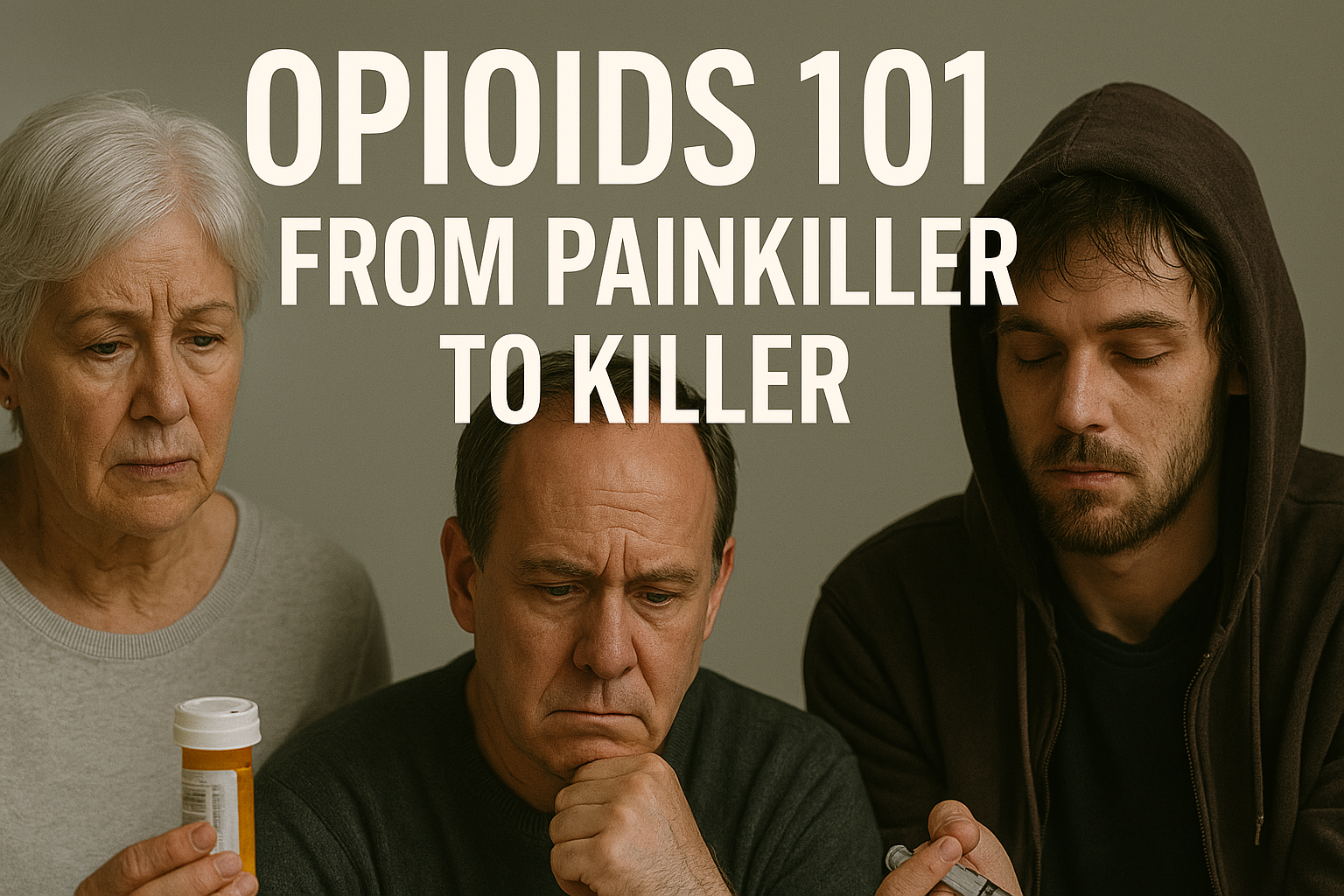Quote: “The brain rewires itself to chase relief, not reality.”
Chapter 2: Opioids 101 – From Painkiller to Killer
To understand the opioid crisis, you have to understand the drug. Not just the molecule or the dosage, but the chemistry of human suffering—and how opioids hijack it.
Opioids are a class of drugs that include natural compounds like morphine and codeine (derived from the poppy plant), semi-synthetics like oxycodone and hydromorphone, and fully synthetic variants like fentanyl and methadone. Originally developed for acute pain relief, particularly in surgery or terminal illness, they became the go-to solution for everything from back pain to wisdom tooth removal.
Hijacking the Brain
Opioids work by binding to receptors in the brain and spinal cord that control pain and pleasure. In doing so, they block pain signals and release massive amounts of dopamine, the neurotransmitter responsible for euphoria and reward.
The problem? The brain is adaptive. It remembers pleasure. And it wants more.
With repeated use, the brain reduces its natural dopamine production and becomes reliant on the drug to feel anything at all. Tolerance develops. The dose that once brought relief becomes useless. The user takes more. The cycle begins.
A Trap Disguised as Treatment
Many opioid users never set out to get high. They set out to feel better. But opioids don’t fix the cause of pain—they mask it. Whether physical or emotional, the underlying problem remains. Over time, the user isn’t just addicted to the chemical—they’re addicted to the absence of pain.
For some, it’s the only way to get through the day. For others, it becomes a ritual. And for too many, it ends in overdose.
A Cultural Shortcut
In a society that values instant gratification, opioids were the perfect solution. No waiting for physical therapy. No addressing trauma. Just one pill to feel okay again.
But relief without resolution is a dangerous game. The body breaks down. The mind follows. And soon, the person chasing relief is lost to the chase itself.
We Made Addiction Predictable
Opioids are not evil. They are powerful. But they were handed out with arrogance, not caution. The science was ignored. The outcomes were predictable.
Now, we live with the result: a generation dependent not just on opioids—but on escape.
As we’ll explore in the next chapter, fentanyl would take everything we know about opioids and magnify it. But the ground was already prepared. This was the blueprint.
And the brain? It never stood a chance.

